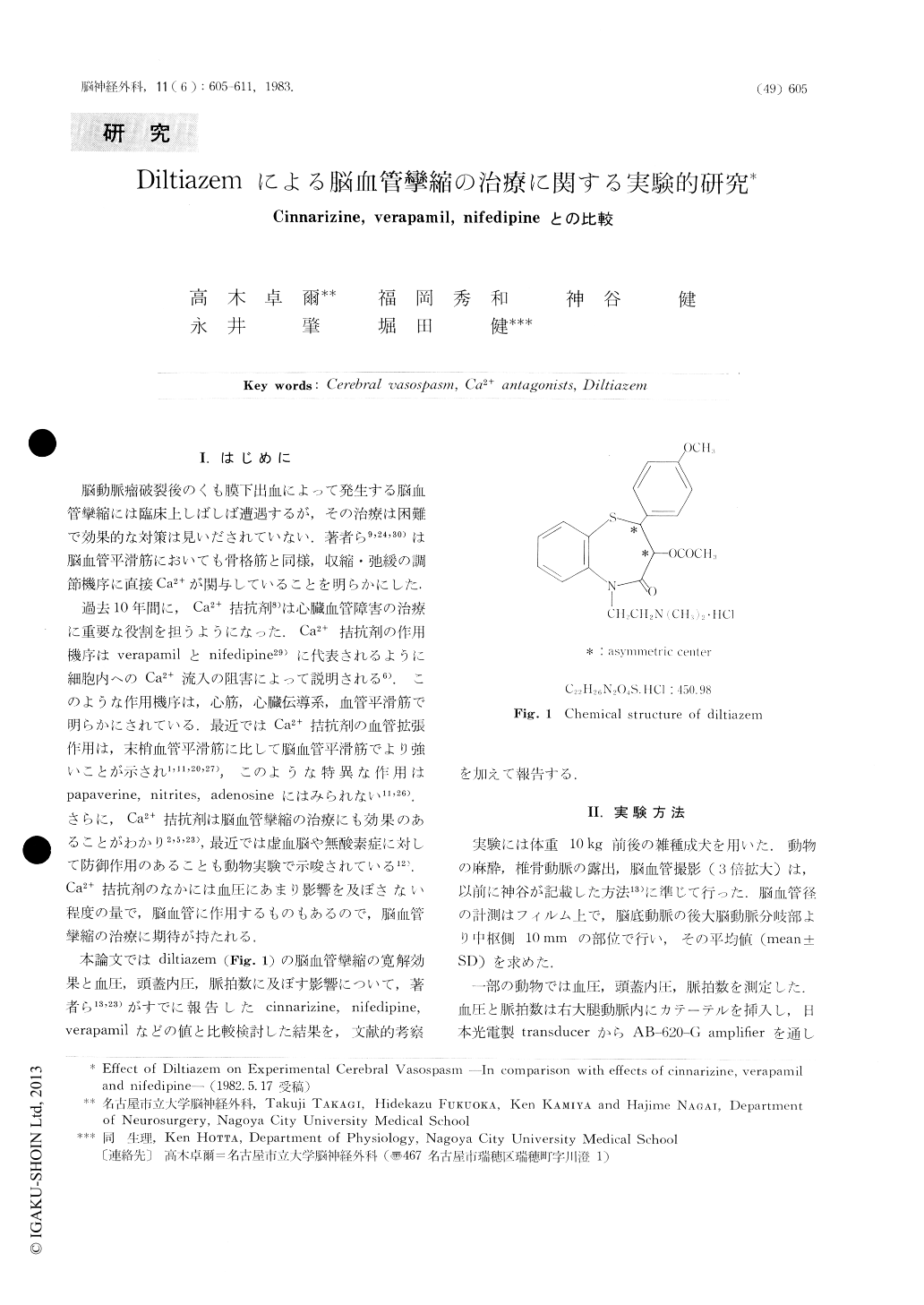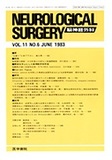Japanese
English
- 有料閲覧
- Abstract 文献概要
- 1ページ目 Look Inside
I.はじめに
脳動脈瘤破裂後のくも膜下出血によって発生する脳血管攣縮には臨床上しばしば遭遇するが,その治療は困難で効果的な対策は見いだされていない.著者ら9,24,30)は脳血管平滑筋においても骨格筋と同様,収縮.弛緩の調節機序に直接Ca2+が関与していることを明らかにした.
過去10年間に,Ca2+拮抗剤8)は心臓血管障害の治療に重要な役割を担うようになった.Ca2+拮抗剤の作用機序はverapamilとnifedipine29)に代表されるように細胞内へのCa2+流入の阻害によって説明される6).このような作用機序は,心筋,心臓伝導系,血管平滑筋で明らかにされている.最近ではCa2+拮抗剤の血管拡張作用は,末梢血管平滑筋に比して脳血管平滑筋でより強いことが示され1,11,20,27),このような特異な作用はpapaverine,nitrites,adenosineにはみられない11,26).さらに,Ca2+拮抗剤は脳血管攣縮の治療にも効果のあることがわかり2,5,23),最近では虚血脳や無酸素症に対して防御作用のあることも動物実験で示唆されている12).Ca2+拮抗剤のなかには血圧にあまり影響を及ぼさない程度の量で,脳血管に作用するものもあるので,脳血管攣縮の治療に期待が持たれる.
The contractile activity of arterial muscle cells is controlled by the interacellular free Ca2+ concentration. The membrane systems of both the cell surface and internal organs, seem to be responsible for controlling the myoplasmic Ca2+-level. The mechansim of action of Ca2+ antagonists, typified by verapamil and nifedi-pine, has been postulated to be a blockade of trans-membrane calcium influx.
In this study, the vasodilating effect of diltiazem on experimental cerebral vasospasm in vivo was exam-ined using dogs and was compared with those of cinnarizine, verapamil and nifedipine which have already been reported by us.

Copyright © 1983, Igaku-Shoin Ltd. All rights reserved.


